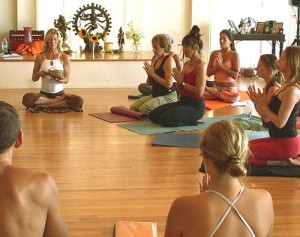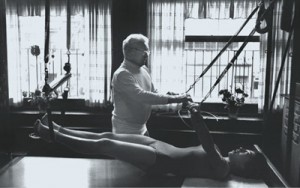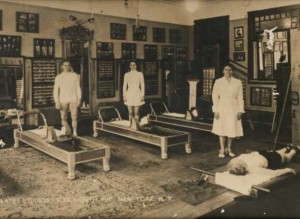Pilates vs. Yoga: Which One is Right for You?
Pilates and yoga are often thrown into the same category of mind-body fitness. New students are understandably confused as to the similarities and differences between each one. Add to that the different styles of pilates and yoga and it becomes even more difficult to differentiate between the two.
Yoga vs. Pilates #1: Development
Yoga originated 5000 years ago in India and has since branched off into several different styles. Yoga was originally intended as a supplement to meditation, with breath and spiritual intent taking precedence over the physical poses. The poses were meant to help train the body to hold still for long periods of deep meditation.
Pilates originated in the early 20th century and was invented by a German boxer, skier and athlete named Joseph Pilates. Pilates worked in a hospital and invented his system as a conditioning program for recovering soldiers. Pilates later brought the practice from Germany to the United States. He opened his first studio in New York City, in the same building as New York City Ballet’s rehearsal studios. Thus began a long association between pilates and female dancers, even though Pilates was invented by a male boxer who developed his exercises for male soldiers.
Yoga vs. Pilates #2: Interpretation of Mind/Body

Yoga focuses on mind-body connection as a way to find spirituality. Pilates teaches the connection between mind and body in order to facilitate more efficient movement. Pilates does not incorporate a spiritual element to the workouts but instead focuses on physical conditioning, which was the original intent of the exercises.
Yoga vs. Pilates #3: Teaching Method
Most yoga classes are taught in group format, on mats with small props like blocks, straps and blankets. These small props allow students to modify poses so that each person can do the form that is accessible to them. Not every yoga teacher is trained in modifications though as I’ve been to some that have insisted that I only needed to put mind over matter in order to achieve positions that I knew were harmful to my existing dance injuries. If you have trouble with the exercise, teachers may ask you to just focus on the breathing or just rest in child’s pose.

Pilates in New York is also taught in group format on mats or in private lessons with large equipment. City pilates fans seem to prefer their private equipment sessions and I admit I see better results for clients that start off on the machines and build a strong foundation before moving to mat class. It’s just too easy to cheat – intentionally or not – in group class and since so much of pilates is all about the technique, you just don’t see the same results as you do when you have an instructor breathing over you (nicely). Pilates’ focus is on the movement so even if you lose the breathing, we will ask you to just keep trying the movement until eventually it goes into your muscle memory.
Yoga vs. Pilates #4: The Benefits
Both yoga and pilates will strengthen and lengthen your body. Because yoga is posture based, there is more focus on achieving flexibility so that you can hold those shapes. Pilates is movement based so there is more focus on achieving strength so that you can flow through each movement with the proper form and muscular firing patterns.
Core strength is a central tenet of pilates. Much of what you do, especially as a beginner, is to find and strengthen your deep core muscles and support movement of the spine in all directions. While you certainly may build core strength in yoga, it is only a piece of your yoga experience rather than the focus.
Yoga vs. Pilates #5: Role of Breathing
Because yoga was intended to support a spiritual practice, the breathing is of tantamount importance to help students focus and achieve a certain spiritual state for meditation. Breath is often taken in deeply, allowing the belly to rise and fall. There are different breathing patterns for different intentions.
Pilates is first and foremost a physical conditioning practice. Breath is important but only because it is a tool to help facilitate movement. In order to keep the abs pulled in throughout the exercises, students inhale through the nose, expanding the sides of the ribs, and exhale through the mouth, getting a little more contraction in the abs as they do so.
So which should I choose: yoga or pilates?
Both yoga and pilates can produce profound strength and flexibility in the body. The best way to choose is to try each one. Yoga is still more common than pilates so whether you are in an urban or less-populated area it should be easy to find a group class to join. If you are in a large city, you may also have access to pilates studios that can offer private pilates sessions with a knowledgeable instructor.

If your main objective is to relax, de-stress, and plug into your spiritual side, you might prefer yoga. If you want to feel energized and focus on the physical conditioning of your core and back minus the spiritual aspect, then you’ll love pilates. If you discover that you love both, do both and let them complement one another!